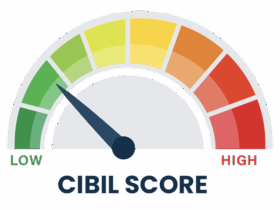In the dynamic world of financial investments, mutual funds have emerged as one of the most popular vehicles for investors looking to diversify their portfolios and achieve long-term financial goals. Among the various types of mutual funds available in India, closed-ended funds stand out as a distinctive investment option.
This article aims to delve into the concept of closed-ended funds, exploring their characteristics, advantages, and considerations within the context of the financial market.
Closed-Ended Funds Defined
Closed-ended funds are a type of mutual fund with a fixed number of units or shares issued during the fund’s initial public offering (IPO). Unlike open-ended funds, which allow investors to buy or sell units at any time, closed-ended funds have a predetermined maturity date. Investors can only purchase or sell units of closed-ended funds on the stock exchange, where these funds are listed and traded like stocks.
Key Characteristics of Closed-Ended Funds
- Limited Duration- Closed-ended funds have a fixed maturity period, typically ranging from 3 to 7 years. This finite timeframe distinguishes them from open-ended funds, providing investors with a clear exit strategy.
- Fixed Capital- The capital of closed-ended funds remains constant after the initial offering. This fixed capital structure ensures that the fund manager does not need to manage frequent inflows or outflows of money, allowing for a more stable investment strategy.
- Listed and Traded on Exchanges- Closed-ended funds are listed on stock exchanges, enabling investors to buy or sell units through secondary market transactions. The market price of these funds may differ from their net asset value (NAV), depending on market demand and supply dynamics.
Advantages of Closed-Ended Funds
- Market-Driven Pricing- The market-driven pricing of closed-ended funds allows investors to benefit from potential price discounts or premiums. If the market price is lower than the NAV, then investors can purchase units at a discount, potentially enhancing their returns.
- Focused Portfolio Management- Since closed-ended funds have a fixed capital structure, fund managers can concentrate on managing the existing portfolio without the constant pressure of handling inflows or redemptions. This enables a more focused and strategic investment approach.
- Liquidity Through Stock Exchanges- The listing of closed-ended funds on stock exchanges provides investors with liquidity options. They can sell their units in the secondary market before the fund’s maturity date, offering flexibility in managing their investment.
Considerations for Investors
- Market Risk- Like any investment, closed-ended funds are subject to market risk. The market price of these funds can fluctuate based on factors such as economic conditions, interest rates, and overall market sentiment.
- Limited Redemption Options- Investors in closed-ended funds should be aware of the limited redemption options compared to open-ended funds. The ability to exit the investment before the maturity date is constrained and liquidity depends on market demand.
- Understanding Premiums and Discounts- The market price of closed-ended funds may trade at a premium or discount to their NAV. Investors should assess the historical trends and factors influencing these premiums or discounts before making investment decisions.
Types of Closed-Ended Funds
In the mutual fund landscape, closed-ended funds have gained prominence as a unique investment avenue. Investors can choose from a variety of closed-ended funds, each catering to different risk appetites and investment objectives. These funds span across asset classes, including equity, debt, and hybrid funds, providing a diverse range of options for investors.
- Equity-Based Closed-Ended Funds- These funds invest predominantly in equities, offering investors the opportunity to participate in the potential capital appreciation of stocks. Equity-based closed-ended funds are particularly suitable for investors with a higher risk tolerance seeking long-term growth.
- Debt-Based Closed-Ended Funds- Investors looking for fixed-income options can explore closed-ended debt funds. These funds primarily invest in fixed-income securities such as government bonds, corporate bonds, and other debt instruments. They provide a more stable income stream with lower volatility compared to equity funds.
- Hybrid Closed-Ended Funds- For a balanced approach, hybrid closed-ended funds allocate their portfolio across both equity and debt instruments. This strategy aims to provide investors with a combination of capital appreciation and income generation while managing overall portfolio risk.
The Role of Technology in Closed-Ended Fund Investments
In the contemporary financial landscape, technology has played a pivotal role in transforming the way investors access and manage their investments. The availability of online trading platforms and mobile applications has made it convenient for investors to buy and sell closed-ended funds with just a few clicks. Notable platforms that have gained popularity are trading apps.
- Convenience and Accessibility- Best trading apps offer investors the convenience of managing their closed-ended fund investments from the comfort of their homes. These apps provide a user-friendly interface, real-time market data, and seamless transaction capabilities, making the investment process more accessible.
- Information and Analytics- Technology-driven platforms offer investors a wealth of information and analytics to aid in decision-making. Investors can access historical performance data, market trends, and research reports to make informed choices about their closed-ended fund investments.
- Portfolio Tracking and Management- Trading apps often come equipped with portfolio tracking tools that allow investors to monitor the performance of their closed-ended fund investments in real-time. This feature enables investors to make timely adjustments to their portfolios based on market conditions. One of the best trading apps that makes trading and investing easy for investors is m.Stock by Mirae Asset. Here are the benefits of using m.Stock-
- Direct investments will incur no commissions, ensuring cost-effectiveness for investors.
- A wide selection of over 5,000 schemes is available for investors to choose from.
- Mutual fund investing is made convenient with a 100% online and paperless process.
- Investors have the flexibility to invest in different types of funds, including debt funds, hybrid funds, and equity funds.
Understanding Closed-Ended Funds
Closed-ended funds represent a unique mutual fund investment option, offering investors a structured and market-driven approach to portfolio management. With a fixed maturity period, market-driven pricing, and the potential for discounts or premiums, closed-ended funds provide investors with a range of advantages and considerations. As technology continues to play a significant role in reshaping the investment landscape, the use of best trading apps enhances the accessibility and convenience of investing in closed-ended funds. Investors should carefully assess their financial goals, risk tolerance, and market conditions before considering closed-ended funds as part of their investment strategy in the dynamic and evolving Indian financial market.












